
Rocamadour Aventure, Rocamadour
Aerial adventures including treetop ladders, zip lines, cave routes and rocks faces to climb. This adventure park offers a mix of everything to keep the whole family entertained.
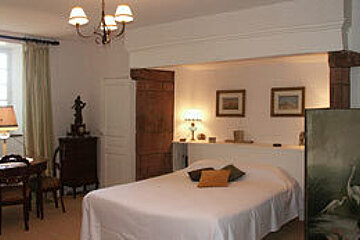
© Jeanne Maison B&B, Collonges-la-Rouge
Picture perfect 15th Century Tower
Brigitte and Pascal will welcome you with open arms into their stunning 15th Century tower, which houses a total of 5 unique guest rooms.
Tastefully decorated and with a feel of true authenticity, you are sure to feel comfortable and treasure the moments spent in this wonderful property. At the end of the day, you can find a quiet spot in the Pastors garden to sit and take in your peaceful surroundings or in the cooler months, you can relax inside in front of the large open fire in the living room.
Each bedroom is delightfully arranged and some make the most of the original wooden beams and expose the red brickwork of the original building.

Aerial adventures including treetop ladders, zip lines, cave routes and rocks faces to climb. This adventure park offers a mix of everything to keep the whole family entertained.
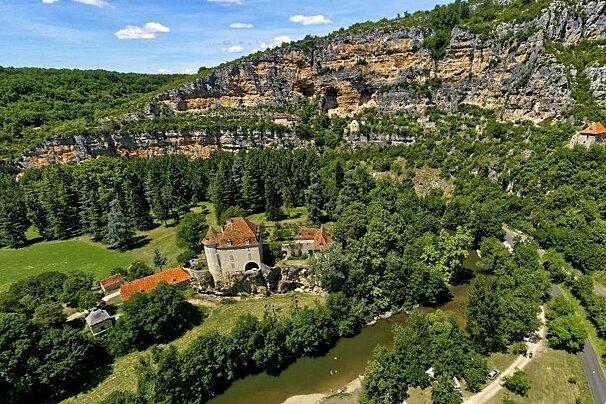
The limestone plateaus of the Causses du Quercy are well known for their rich biodiversity, culture and history. Here you will find plenty of outdoor activities for all the family to enjoy.

100% electric and 100% silent, the infamous tuk-tuk comes to Saint Emilion to take you on a tour or the town and the vineyards that surround it.
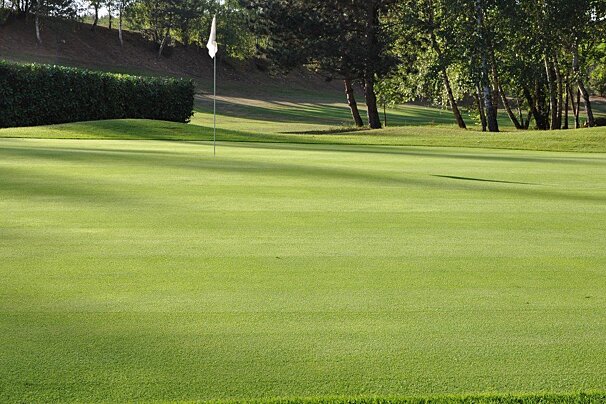
Open every day of the year this 9-hole, par 35, course is set in the lush countryside of the Dordogne and the grounds of Chateau les Merles.
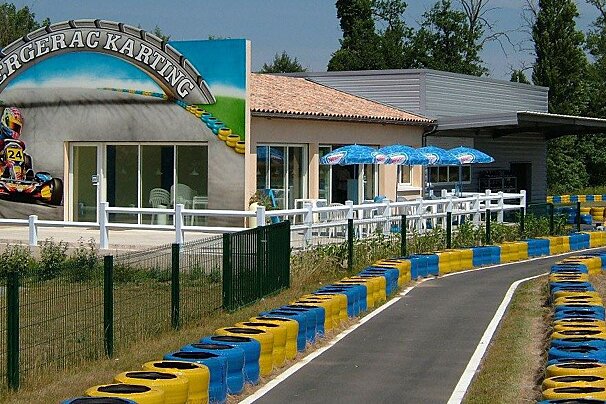
In the heart of the 'Purple Perigord' you can share and enjoy the passion of owner Jean-Pierre who has been part of competitive karting since the late 1980's.

This wildlife park is dedicated to the Barbary Macaque monkey who roams free in the 20 hectares of woodland.

The dining rooms allow for views of the surrounding vineyards and rolling hills. Drinks can also be enjoyed in the small library or among the chestnut trees.

This elegant and sophisticated two Michelin star restaurant offers creative dishes designed by chef Cédric Béchade, who plays with colours and textures in his cuisine.

At the top of the hills of Monbazillac, surrounded by vineyards, the shady terraces and dining rooms of this restaurant offer an unforgettable panoramic view. The chef, Marie Rougier, produces a fine dining menu from seasonal products.

Offering a generous choice of traditional French dishes and a large wine selection, this restaurant is located in the heart of the picturesque town of Saint-Émilion. Diners can be accommodated in its intimate dining room, its small terrace, or a special table in its wine cellar carved out of the rock.

This restaurant offers various possibilities for dining in the same place: a fine restaurant serving modern French cuisine, a bistro with local and seasonal dishes, and a tea room. There is also a beautiful sunny garden overlooking the vineyards.
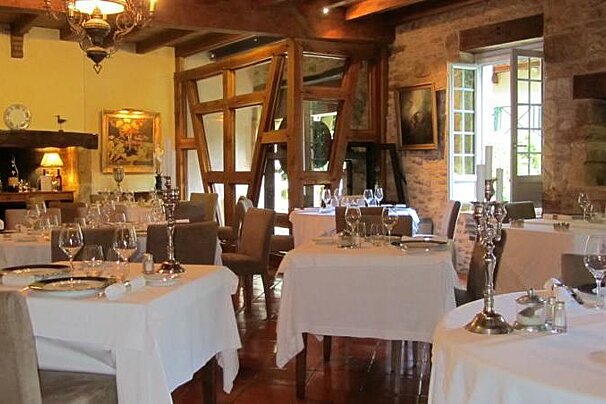
A bright restaurant with stone walls, old wooden beams, fireplace and inviting allure, offer up culinary delights from the region. A strong focus is on local local treats and seasonality.
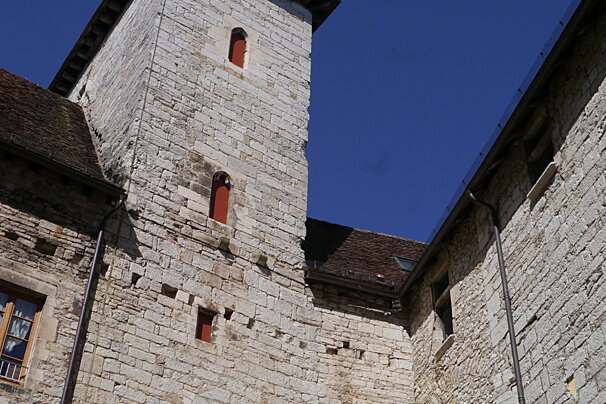
The Palais de la Raymondie stands next to the market hall in the heart of the medieval town of Martel. This museum contains objects dating from paleolothic, neolithic and Gallo-Roman occupations.
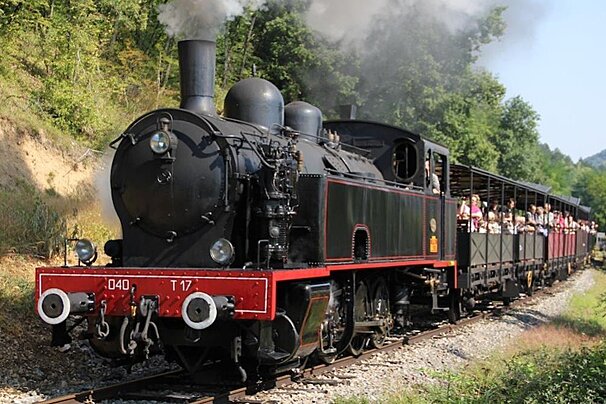
Also known as the Truffle train, it will take you on a journey of 8 miles (13 Km) round trip, more than 80 meters (260 feet) high cliff, giving a wonderful panorama of the Dordogne Valley.
Housed in the Hôtel de Labenche, a Renaissance building from the 16th century, this museum traces the archaeological history of the city from prehistoric to the middle ages. It has a large collection of finds and includes the oldest preserved Eucharistic dove in Europe which dates to the 11th century. Coming to more recent history, it has collections representing the cultural development of the city and a collection of English Mortlake tapestries from the 17th century.
This museum in the centre of Brive covers the Second World War and the Resistance. It is housed in the former home of Edmond Michelet, a key resistor who was arrested by the Germans in 1943 and sent to the concentration camp at Dachau. He survived and returned to France in 1945 and went on to become Minister for the Armed Forces under the de Gaulle government. His studies on the Resistance won him literary prizes and his home has become a study centre as well as a museum. Many of the museum's collections were gifts from former resistance fighters and it houses an exceptional collection of over 400 propaganda posters.
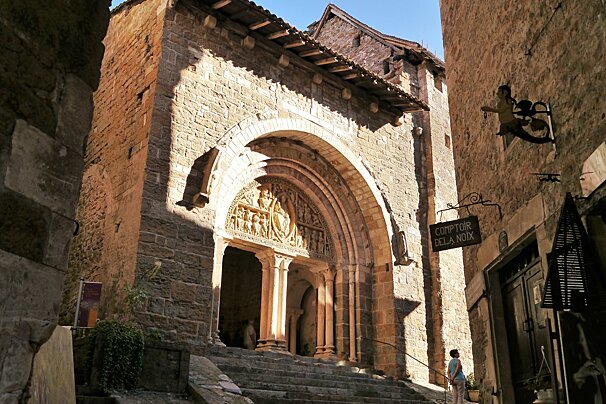
The village of Carennac grew up around a clunian priory founded in the middle of the 11th-century. This beautiful church and cloister are at the centre of the village.

This well-preserved chateau is now home to the Heritage Centre for Art and History of the Dordogne region, with a permanent exhibition that explains the wealth, heritage, art and architecture of this region.
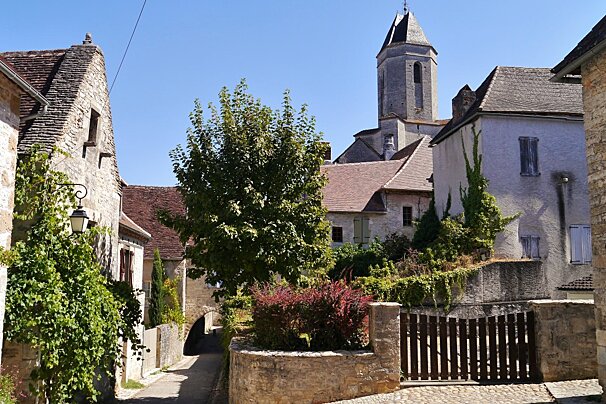
The town of Martel is not, in fact, famous for the brandy (that's Martell with two ll's) but is well known as the capital of truffles and a great producer of walnuts, two of the region's specialities.

Carennac has been previously voted 'One of the 'Most Beautiful Villages in France' and it's easy to see why. The blonde stone and red-brown roofs of its buildings have tall chimneys and are adorned with creepers that turn red in the autumn.

This medieval town on a bend in the Dordogne grew around its 9th century Benedictine abbey of Saint-Pierre.

A base for exploring the region, Souillac has a medieval past and is filled with Romanesque-style sculptures.

Picturesque village typical of Quercy. The traditional houses have corbelled fronts, brown-tiled roofs and pigeon lofts built into their walls.

The riverside town of Saint-Céré is a lovely place to base yourself for excursions in the region. The La Bave river winds its way through the centre of the town and its old buildings have been carefully restored, retaining their timber vaulting or Renaissance stonework.